
Guest Author
In an era where every artist’s dream is to stand out, how can social media for artists be a game-changer?
The right strategy on platforms like Instagram, Pinterest, or TikTok can transform obscurity into visibility, connecting creators with a global audience. Yet, the journey from posting artwork to building a following demands more than just consistency; it requires a nuanced understanding of each platform’s unique dynamics.
This article aims to demystify social media for artists, offering actionable tips for showcasing your work effectively. Whether you’re looking to create genuine relationships with your audience, attract galleries, sell your pieces directly, or do it with a print on demand partner, we provide insights into making the most of your online presence.
Streamline your marketing with an efficient social media strategy template.
Short Summary
- Choose social media platforms that align with your art’s visual nature and where your target audience is most active. Instagram, Behance, Pinterest, ArtStation, TikTok, LinkedIn, and X (formerly Twitter) are highlighted for their unique benefits to artists, ranging from professional networking to showcasing visual portfolios and engaging with a broad audience through dynamic content.
- Building a community around your work is vital for long-term success. Engage with your followers through comments, direct messages, and content that encourages interaction. Utilizing tools like SocialBee’s Engage module can help artists manage and boost engagement across multiple platforms.
- Diversify your content types to include high-quality images, behind-the-scenes glimpses, tutorials, and short creative process videos. Tailoring your content to fit each platform’s strengths can enhance visibility and engagement.
- Beyond just posting art, employ strategic marketing practices such as optimizing your social media profile, using relevant hashtags, engaging with followers, and identifying optimal posting times to expand your reach and cultivate a vibrant online community.
- Partner with fellow artists and influencers to access larger audiences and stimulate creative inspiration. Additionally, leverage email marketing to promote your social media content and grow your follower base, integrating social sharing icons and enticing visuals of your work to encourage engagement and follow-through.
Table of Contents
What Are the Benefits of Social Media for Artists?
Social media platforms aren’t just for casual networking and entertainment; they’re powerful tools for creative professionals looking to enhance their art business.
Here’s why establishing a strong presence on the right social media platform can benefit artists:
- Worldwide visibility: Social media sites break geographical barriers, offering artists the chance to gain international exposure. While a gallery exhibition might attract local interest, sharing your artwork online instantly propels it onto a global stage.
- Building a community: The foundation of enduring success in the art world hinges on community and loyal supporter engagement. Just as BTS has ARMY and Beyonce has the Beehive, artists can forge meaningful relationships with followers, turning them into passionate supporters.
- Interaction and insights: Engaging with your audience on social media is crucial for fostering a sense of community. It’s an effective channel for receiving feedback and understanding consumer preferences, helping you stay aligned with market demands.
- Direct to consumer sales: Social media platforms enable artists to bypass traditional selling routes, offering a direct line to potential clients interested in purchasing art. This accessibility can significantly increase art sales and commission opportunities.
Social media has proven its worth in the business sector, and there’s every reason for artists to leverage these sites to advance their art career, connect with potential clients, and sell art more effectively.
Top Social Media Platforms Every Artist Should Consider
Before choosing a social media channel, consider the following questions:
- Who is your target audience?
- What is the visual nature of your art?
Your audiences determine which social apps you will use. There’s no point in marketing on Instagram if your target market is on Behance. Furthermore, the visual nature of your art narrows your choice to visually oriented channels. For example, Instagram is probably better suited for videos than Pinterest.
That said, here are some top social media platforms every artist should consider:
- Instagram
- Best for: Visual storytelling and showcasing images or videos of artwork.
- Pinterest
- Best for: Inspiration boards, project ideas, and driving traffic to personal or commercial websites through image curation.
- TikTok
- Best for: Reaching a broad and diverse audience through engaging, short-form video content.
- LinkedIn
- Best for: Professional networking, sharing achievements, and discovering job opportunities within the art industry.
- X (formerly Twitter)
- Best for: Engaging in real-time conversations, sharing quick updates, and connecting with a supportive community of artists and art enthusiasts.
- Behance
- Best for: Professional portfolio display and networking with other design professionals.
- ArtStation
- Best for: Exposing digital art, concept art, and portfolios aimed at the gaming, film, and entertainment industries.
1. Instagram
Instagram is one of the most popular visual social media platforms to connect with potential customers. 74% of art buyers use the app to purchase art, partly because the its layout is ideal for showcasing beautiful artwork.
Here’s what you should know about using Instagram as a professional artist:
- Best for: Visual storytelling and showcasing images or videos of artwork.
- Best performing content types: Image posts of artwork, Stories for behind-the-scenes glimpses, Reels for short creative process videos.
- Differentiating features from other platforms: Instagram’s visually centered layout is designed specifically for photo and video content, making it the go-to platform for artists to present their work aesthetically. The platform also offers various content formats (posts, Stories, Reels, Communities) under one roof. Thanks to its shoppable tags, it can also be used as an online marketplace.
- Tips for artists: Utilize all content formats to showcase different aspects of your work and process. Use hashtags strategically to reach wider audiences, engage with your followers through comments and direct messages, and post consistently to keep your audience engaged.
Having a nicely curated Instagram feed is as important as engaging with your audience. See below how illustrator Cat Finne uses her Instagram page as a digital gallery of her work.
When leveraging Instagram to enhance your visibility and engagement, consider integrating tools like SocialBee’s Engage module. This tool can be a game-changer for artists aiming to streamline their social media management.
By using SocialBee‘s social inbox, artists can efficiently track engagement metrics, monitor comments, direct messages, and mentions all in one place. This allows for a more organized and timely interaction with your audience.
Stay on top of your social media game by actively engaging with your Instagram audience.
Start your 14-day free trial now!
SocialBee simplifies the way artists manage their engagement, making sure no chance to connect is overlooked:
- All-encompassing interaction management: Cover every aspect of engagement, from comments to mentions across your social profiles. Ensure every piece of feedback and acknowledgment is recognized and responded to.
- Unified multichannel engagement: With SocialBee, you’re not just limited to Instagram. The platform enables artists to interact with their audience on various platforms including LinkedIn, Facebook, X (formerly Twitter), and Google Business Profile. Adopting a unified approach to engagement across these platforms can significantly bolster your artistic brand’s visibility online.

Engage with Your Social Media Audience from SocialBee!
Note that the shopping feature is only available in supported markets and is limited to physical products. Don’t worry. You can still sell your work on the app even if you’re not eligible for the shopping program. Simply create an Instagram landing page or use Instapage alternatives to direct customers to product pages on your website.
2. Pinterest
Pinterest is a visual discovery platform where users curate and bookmark images into boards. Like Instagram, its layout allows artists to create aesthetically pleasing profiles which help attract followers.
Here’s what you should know about Pinterest as a social media platform for artists:
- Best for: Inspiration boards, project ideas, and driving traffic to personal or commercial websites through image curation.
- Best performing content types: High-quality, visually appealing images linked to tutorials, blog posts, or online stores. Infographics and step-by-step project guides also perform well.
- Differentiating features from other platforms: Pinterest acts as a search engine for ideas and inspiration, with strong emphasis on DIY, tutorials, and lifestyle content. Users can easily save and categorize content into boards.
- Tips for artists: Ensure your pins link back to your website or shop, use keywords in your pin descriptions for better search visibility, and create boards that reflect your art style or interests to attract a like-minded audience.
Artists like Sergio Kovalov, for instance, display their work under the ‘Created’ tab and curate posts in the ‘Saved’ tab.
3. TikTok
TikTok has swiftly emerged as one of the best social media platforms for artists aiming to capture the attention of a broad audience in a virtual environment. Its format of short-form video content is ideally suited for dynamic storytelling, allowing artists to present their work in engaging ways.
Here’s what you should expect from TikTok as a social media platform for artists:
- Best for: Reaching a broad and diverse audience through engaging, short-form video content.
- Best performing content types: Time-lapse videos of artwork creation, tutorials, day-in-the-life videos, and challenges or trends related to art.
- Differentiating features from other platforms: TikTok’s algorithm has a unique ability to make content go viral due to the platform’s ability to reach target audiences with niche interests and deliver highly customized content to them. The platform is geared towards entertainment and engagement through short, catchy videos.
- Tips for artists: Capitalize on current trends and challenges, use hashtags relevant to your niche, and keep your videos engaging and to the point. Showcasing your personality and process can help you connect with followers.
Known for his realistic portraits, especially of passengers on the New York Subway, Devon Rodriguez (@devonrodriguezart) has gained a massive following on TikTok by sharing time-lapse videos of his drawing process and reactions of his subjects.
Such engagement not only helps in building a substantial following but also opens up opportunities for artists to engage in brand collaborations, direct sales, and more, leveraging the platform to reach a wide and diverse audience in this virtual landscape.
4. LinkedIn
LinkedIn stands out as the best social media platform for professional artists keen on art marketing and expanding their professional network within the art industry and beyond. It is a great platform for establishing a professional brand, highlighting achievements and showcasing portfolio pieces.
Here’s what you can expect from using LinkedIn as a social media marketing platform for artists:
- Best for: Professional networking, sharing achievements, and discovering job opportunities within the art industry.
- Best performing content types: Posts about recent projects, achievements, exhibitions, or articles offering professional insights into the art world.
- Differentiating features from other platforms: LinkedIn is a professional networking site, making it ideal for more formal content related to career development, professional achievements, and industry networking.
- Tips for artists: Keep your profile updated with your latest projects and professional experiences, participate in relevant groups and discussions, and share content that positions you as an expert in your field.
Refik Anadol, a renowned media artist and director known for his pioneering work in the field of art and technology, actively uses LinkedIn to share his innovative projects.
Anadol specializes in site-specific public artworks, immersive installations, and digital experiences that integrate machine learning, data analytics, and immersive environments to challenge our perceptions of space and narrative.
His work often explores the space between digital and physical, creating a hybrid relationship between architecture and media arts.
Anadol’s LinkedIn profile serves as a platform not only for professional networking but also for inspiring dialogue on the potential of new technologies in creative expression.
His updates highlight his latest exhibitions, talks, and projects, such as his data-driven art installations that visualize and interpret vast datasets in visually stunning ways, making him a key figure in the intersection of art and technology on LinkedIn.
5. X (formerly Twitter)
X, formerly known as Twitter, stands out as a distinctive platform for artists, offering a supportive community, unlike Instagram’s visually-centric approach. Here, artists can quickly share updates, insights, and snippets of their work using a mix of text, images, and videos.
Here’s what you should know about using X for your artist social media marketing:
- Best for: Engaging in real-time conversations, sharing quick updates, and connecting with a supportive community of artists and art enthusiasts.
- Best performing content types: Tweets that share artwork, participate in trending topics, and quick insights or thoughts on the art world. Visual content like images and short videos also performs well.
- Differentiating features from other platforms: X’s real-time nature and text-based format make it unique for sharing timely updates, participating in global conversations, and voicing opinions on art and social issues.
- Tips for artists: Use relevant hashtags, post regularly, engage with other artists, art galleries, and followers by replying to tweets, and share a mix of personal insights, artwork, and industry news.
ELIOLI Art, known for their distinctive and vibrant illustrations, utilizes X as a dynamic platform to connect with a wide audience. By posting images of their latest artworks, they captivate art lovers and other creatives, drawing attention to their unique style.
This environment encourages collaboration, the exchange of ideas, and opportunities for artists to expand their visibility and influence in a community that values creativity and dialogue.
6. Behance
Behance stands as a premier social media platform tailored for the creative community. It offers artists a professional space to showcase their portfolios, from graphic design and illustration to photography and fashion design.
Here’s what you should know about using Behance for your artist personal brand:
- Best for: Professional portfolio display and networking with other design professionals.
- Best performing content types: Detailed project showcases that include images, videos, and text descriptions of the creative process, concept development, and final results.
- Differentiating features from other platforms: Behance is tailored for creative professionals to display their portfolios in a more structured format, with a focus on the storytelling aspect of projects. It’s directly connected to the creative industry, with job postings and opportunities for exposure through featured galleries.
- Tips for artists: Focus on the quality and presentation of your project uploads, include comprehensive descriptions and the creative process, and engage with the community by commenting on and appreciating others’ work.
Behance is the place where creatives like graphic designer Jose Manuel Vega (see below) go to showcase their professional portfolios, engage with fellow artists, and connect with potential employers via hiring and job boards.
Compared to Instagram’s two billion users, Behance has 50 million members. But that isn’t necessarily a drawback. Smaller channels tend to have more targeted and engaged users than larger platforms.
7. ArtStation
ArtStation emerges as the definitive social media platform for artists entrenched in the gaming, film, and entertainment industries. It’s a specialized hub where digital artists, concept designers, and illustrators can exhibit their portfolios, showcasing their finest work to a targeted audience that appreciates the intricacies of visual storytelling and design.
Here’s how you can use ArtStation as an artist:
- Best for: Exposing digital art, concept art, and portfolios aimed at the gaming, film, and entertainment industries.
- Best performing content types: High-quality images of digital artwork, portfolio projects, and behind-the-scenes looks at the creative process, including sketches and work-in-progress shots.
- Differentiating features from other platforms: ArtStation is specifically designed for artists in the gaming, film, and entertainment sectors, offering features like portfolio websites, job boards, and the ability to sell prints and digital downloads.
- Tips for artists: Make use of ArtStation’s portfolio website feature to create a professional online presence, participate in community challenges to gain visibility, and regularly update your portfolio with your latest work.
ArtStation is where concept artists like Val Orlov get noticed by industry professionals.
ArtStation has four pricing levels: free, plus, pro, and studio. Depending on your price plan, you can create a digital portfolio website, engage followers with blog posts, or monetize your visual content on the app’s marketplace.
4 Effective Social Media Marketing Strategies for Artists
It’s not enough to post your art. You must promote it strategically as well. Many artists don’t achieve the social media success they desire because they don’t have a marketing plan, resulting in missed opportunities.
So, here are four social media best practices to adopt when promoting your artwork:
- Expand your social reach using social media
- Cultivate a vibrant online community
- Identify optimal posting times
- Collaborate with fellow artists and influencers
1. Expand Your Social Reach Using Social Media
To ensure your art reaches as many eyes as possible, begin by fine-tuning your social media profile for maximum discoverability.
Here’s how you can optimize your social media account:
- Select an easily identifiable social media handle: Your handle should reflect your artistic identity, resonate with your niche, and be memorable to potential buyers and new audiences.
- Utilize keywords and hashtags strategically: Embed keywords relevant to your art in your profile bio and use targeted hashtags in your posts to improve visibility on the social network.
Attracting a substantial follower base amplifies the reach of your art. More followers mean more potential buyers and enthusiasts engaging with your work.
To expand your following and reach a broader audience on social media, consider the following:
- Post short video content: Short-form videos, like Reels and TikToks, have become essential for social media growth. They are more likely to reach people who don’t already follow you, offering a great opportunity to expand your audience.
- Embrace social SEO: Optimizing your content for social search engines can significantly increase your visibility. Use keyword research, captions, and effective alt text to help your content get discovered by those actively searching for it.
- Engage with your audience: Engagement is key on social media. Responding to comments, messages, and mentions shows that you value your audience’s interaction, fostering a more connected community.
- Optimize your hashtags: Use relevant hashtags to increase the discoverability of your posts. A mix of niche-specific and broad hashtags can help attract a more targeted audience. Avoid generic, spammy hashtags to prevent shadowbans.
- Collaborate with micro-influencers: Partnering with micro-influencers can help reach new audiences. Look for influencers who share your artistic values and have a genuine connection with their followers for more effective collaborations.
- Create a consistent posting schedule: Posting regularly on social media is crucial. Consistency helps in establishing a habit among your audience, making it easier for new followers to engage with your content.
PRO TIP: Do you want to simplify your social media planning and save time while doing it? Create, schedule, publish, and reshare your content consistently to all your accounts from one place: SocialBee, your AI-powered social media management tool. Start your 14-day free trial now! Access the visual calendar to strategically plan your content strategy with a few simple clicks and have full control over your entire posting plan. |
2. Cultivate a Vibrant Online Community
Having hundreds of followers doesn’t mean you have a community. You need to engage them consistently so you can create and cultivate one.
Artists can cultivate a vibrant social media community by focusing on these key strategies:
- Select appropriate platforms: Choose platforms that align with your art style and audience preferences. Instagram and Pinterest are great for visuals, TikTok for short videos, and Twitter for engagement and discussions.
- Engage your audience: Interact through comments, polls, and user-generated content prompts. Share behind-the-scenes looks to create a more intimate connection.
- Content quality and variety: Post high-quality images and videos. Incorporate a mix of finished artworks, work-in-progress shots, and studio tours to keep your feed diverse and engaging.
- Utilize platform-specific strategies: Adapt your content strategy to fit each platform’s unique features and audience. For example, leverage trending sounds on TikTok and share professional achievements or exhibitions on LinkedIn.
- Experiment with content: Beyond displaying finished pieces, offer insights into your creative process, tutorials, or tips related to your art form to provide value and establish yourself as an expert in your field.
3. Identify Optimal Posting Times for Each Social Media Platform
Scheduling posts when most of your followers are on social media is crucial to increasing your engagement stats.
To refine your social media strategy and identify the best times to post, consider these concise steps:
- Utilize general posting time guidelines: Start with widely recommended posting times, such as mornings on weekdays for platforms like Instagram, adjusting as you learn more about your audience.
- Leverage platform analytics: Use embedded analytics tools to see when your followers are most active and how they engage with your content.
- Monitor key metrics:
- Engagement: Tracks how interactively your audience engages with your content.
- Reach/Impressions: Measures the visibility of your posts.
- Follower growth: Indicates how your content strategy affects audience growth.
- Experiment with posting schedules: Test posting at different times and days, tracking which yield the highest engagement and reach.
- Know your audience: Tailor your content strategy based on your audience’s demographics, online behavior, and preferences.
- Adjust strategy based on data: Regularly review your social media performance and adjust your content and posting schedule to optimize engagement and reach.
PRO TIP: Use SocialBee to analyze your progress and adjust your content plan with ease. Start your 14-day free trial now! Our platform offers innovative tools to optimize your social media strategy, featuring best posting time recommendations based on your top-performing content to ensure you reach your audience when they’re ready to engage. |
4. Collaborate with Fellow Artists and Influencers
Partnering with other artists and influencers gives you immediate access to a larger audience of targeted buyers. Furthermore, artistic collaborations get your creative juices flowing.
Here’s what you should look for in an artistic social media collaboration:
- Relevance – look for partners (not competitors) in your niche. For example, a concept artist could collaborate with a gaming influencer for a wallpaper or screensaver.
- Reach – refers to the number of people you can access through the influencer’s follower base. Bigger isn’t always better. Choose quality over quantity.
- Resonance – refers to collaborators’ engagement rates. A nano-influencer with an engaged following is more valuable than a mega-influencer with inconsistent engagement.
Build a relationship with your potential partner before making your pitch for a collaboration. Interact with their posts first so they’ll have an idea of who you are. Then personalize your direct messaging when pitching your proposal.
BONUS TIP: Harness the Power of Email Marketing
Email marketing is different from social media marketing. But since it can, in many ways, help boost your social media efforts, we included this tip in this article. Email is one of the most effective marketing tools. You can use it to boost your social media efforts.
How exactly, you ask? Simple. Just use email to promote your social media marketing.
Why not announce the posting of your newest piece on your social platform? You can even leverage your subscribers when it comes to promoting the post. Just embed social sharing icons—Instagram and Pinterest, for instance, have these—in your email. This way, subscribers can just click on them to republish your social post on their own social accounts.
You can also use email to generate more social media followers. You could include images of your work to entice people who love art to connect with you. See how this artist did it:
If you want to include additional copy but don’t have the time to write, AI templates can help. Just specify what you need and AI can customize your email copy accordingly.
As a final tip, make it easy for subscribers to follow you. In your email, include a relevant social icon they can just click on to log into their own accounts and take your desired action.
Frequently Asked Questions
Yes! Having social media accounts is less of a choice and more of a necessity for artists. It’s about building a personal brand, connecting directly with art buyers, and opening up opportunities for direct sales.
Each social media site serves as a global stage, showcasing your work to an audience that traditional galleries could never reach. Through these platforms, you can not only display your art as content but also sell it directly to followers without intermediaries. This direct line to your audience fosters a deeper connection, turning casual viewers into loyal customers.
In short, social media is an essential tool for artists aiming to expand their visibility, engage with buyers, and control their sales and career growth in the art world.
Deciding whether TikTok or Instagram is better for artists hinges on your content style and audience goals. Instagram excels at displaying high-quality images and has a diverse content range, making it perfect for a visual portfolio and connecting with an established art community.
TikTok, on the other hand, thrives on its viral potential and interactive format, making it ideal for artists looking to showcase their process and personality to a broader, often younger, audience.
In 2024, artists amplify their social media game by posting work on platforms best suited to their art style and audience. Instagram remains a top choice for its visual focus, perfect for showcasing portfolios.
TikTok offers a stage for engaging videos, appealing to a younger, wider audience with creative processes and behind-the-scenes looks. For professional networking and art-related conversations, Twitter and LinkedIn connect artists with industry professionals and art-related groups.
Each platform serves a unique purpose, enabling artists to reach a diverse audience and participate effectively in the broader art community.
Ready to Boost Your Artist Social Media Presence?
Are you ready to elevate your social media game as an artist? Remember, marketing your art is just as passionate an endeavor as creating it. Navigating social media for artists doesn’t have to be overwhelming, costly, or time-intensive.
By choosing the most suitable platforms and employing effective strategies, you can captivate your audience and convert them into dedicated supporters.
Don’t let another day pass without maximizing your social media potential. Embrace these insights and strategies to achieve remarkable outcomes. Ready to take the next step? Begin your journey to social media success with a 14-day SocialBee trial!

Boost Your Social Media Strategy with SocialBee!
About the author: Nico is the founder of Launch Space. The company works with enterprise SaaS and VoIP clients, helping them scale lead generation globally across EMEA, APAC, and other regions.



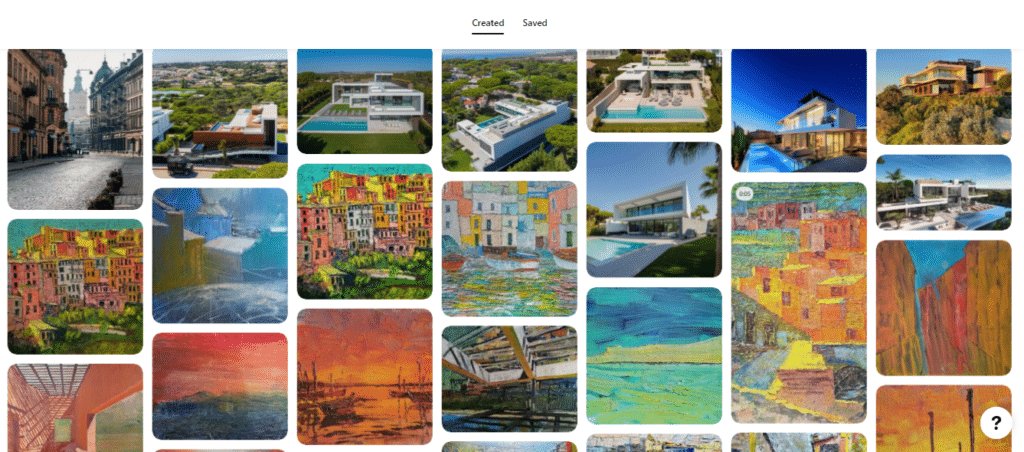
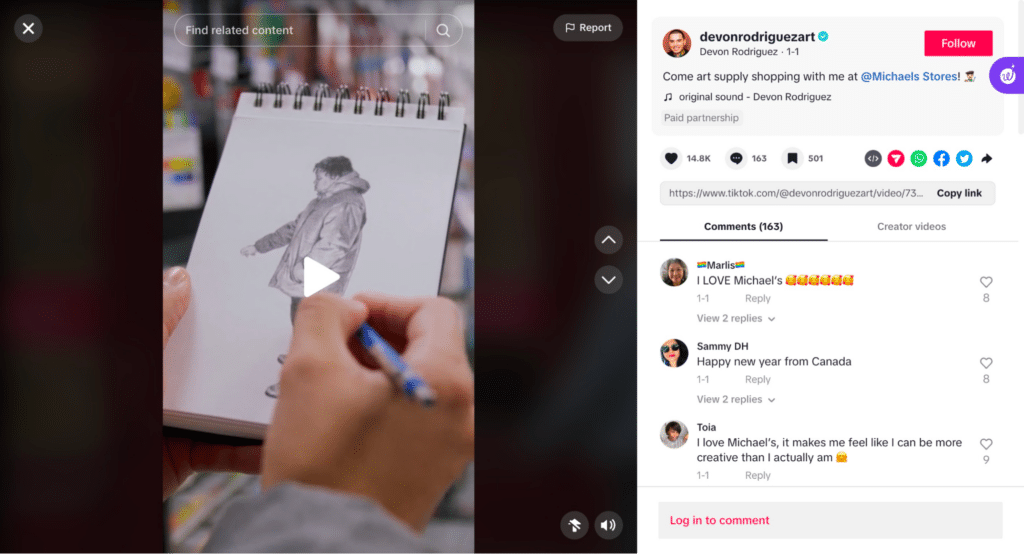



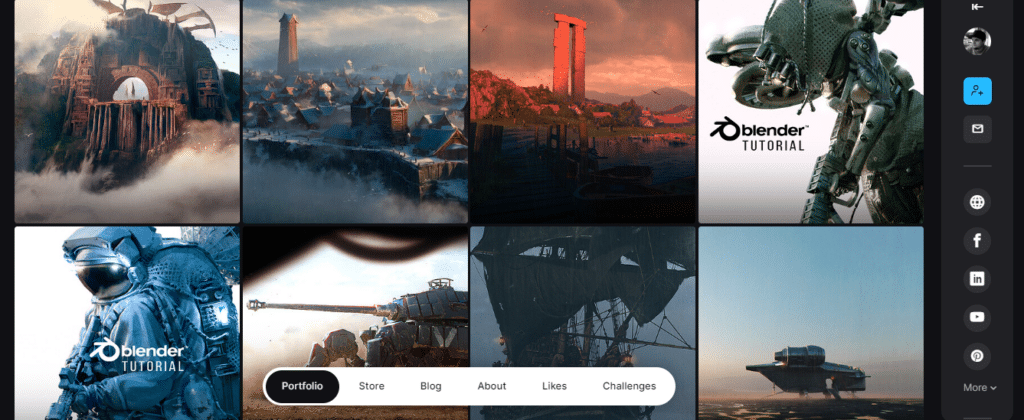

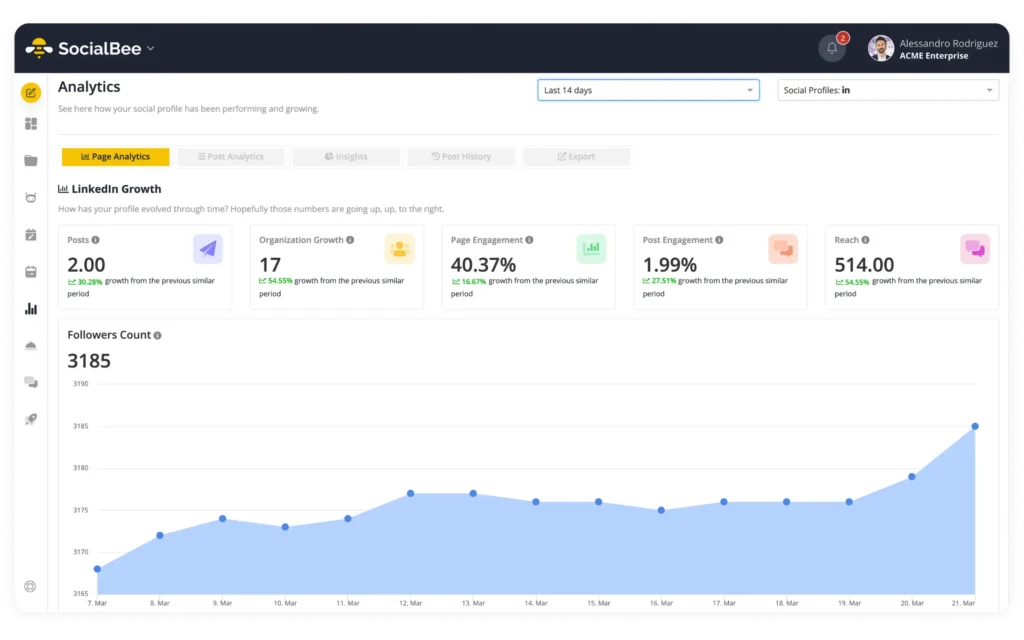









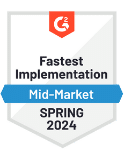

 Customizable tone of voice
Customizable tone of voice  Several variations to choose from
Several variations to choose from  1,000 pre-made AI prompts
1,000 pre-made AI prompts